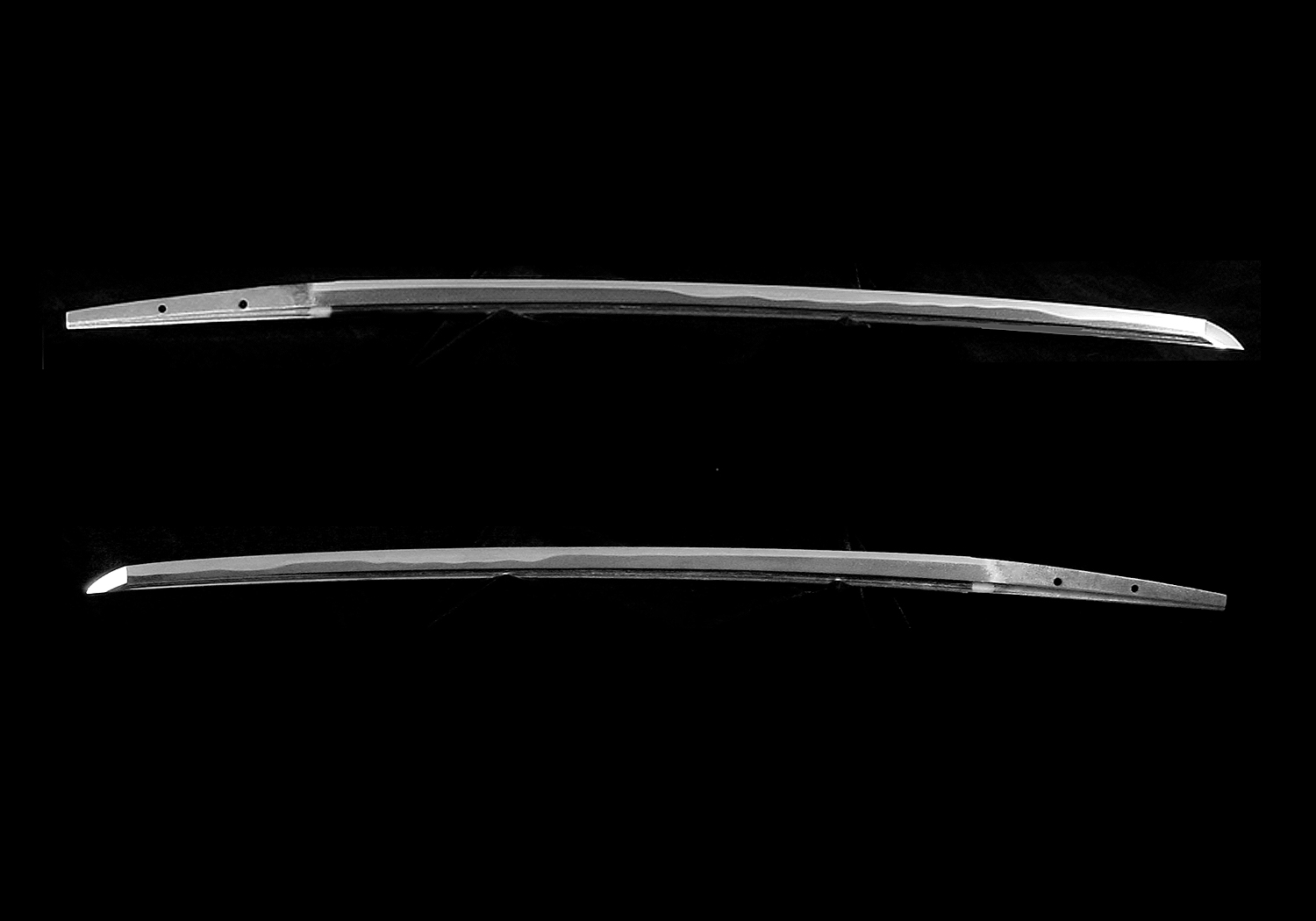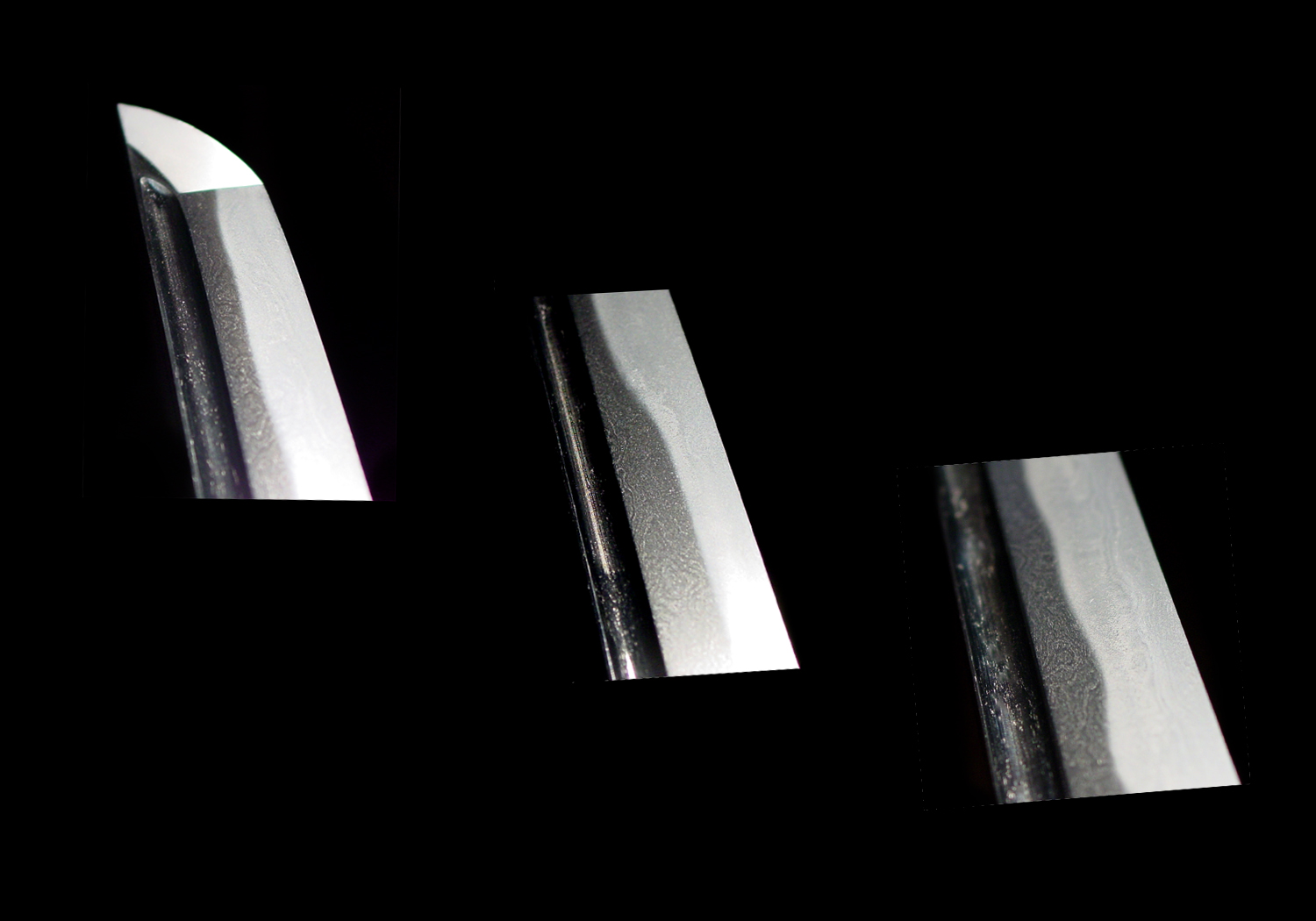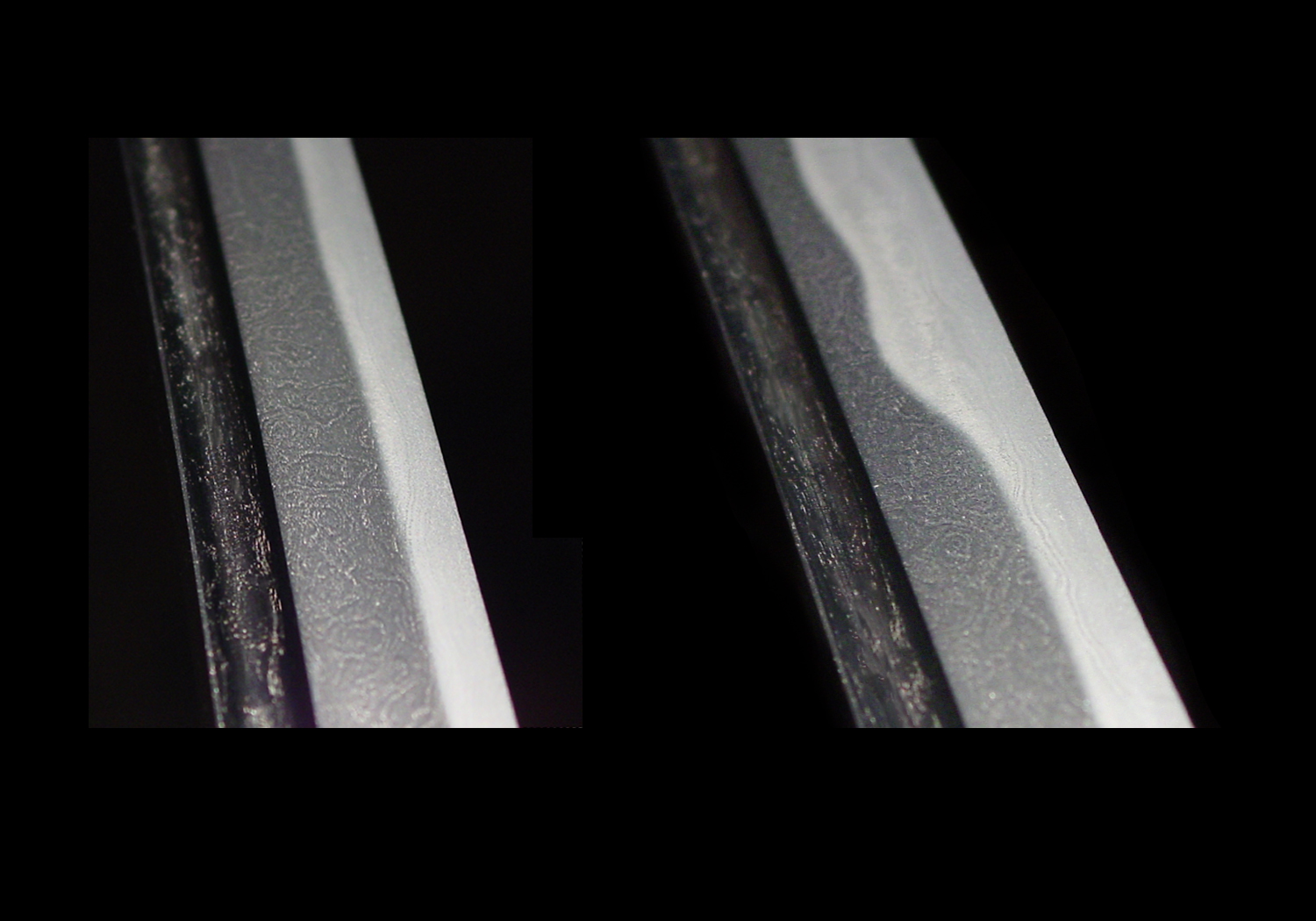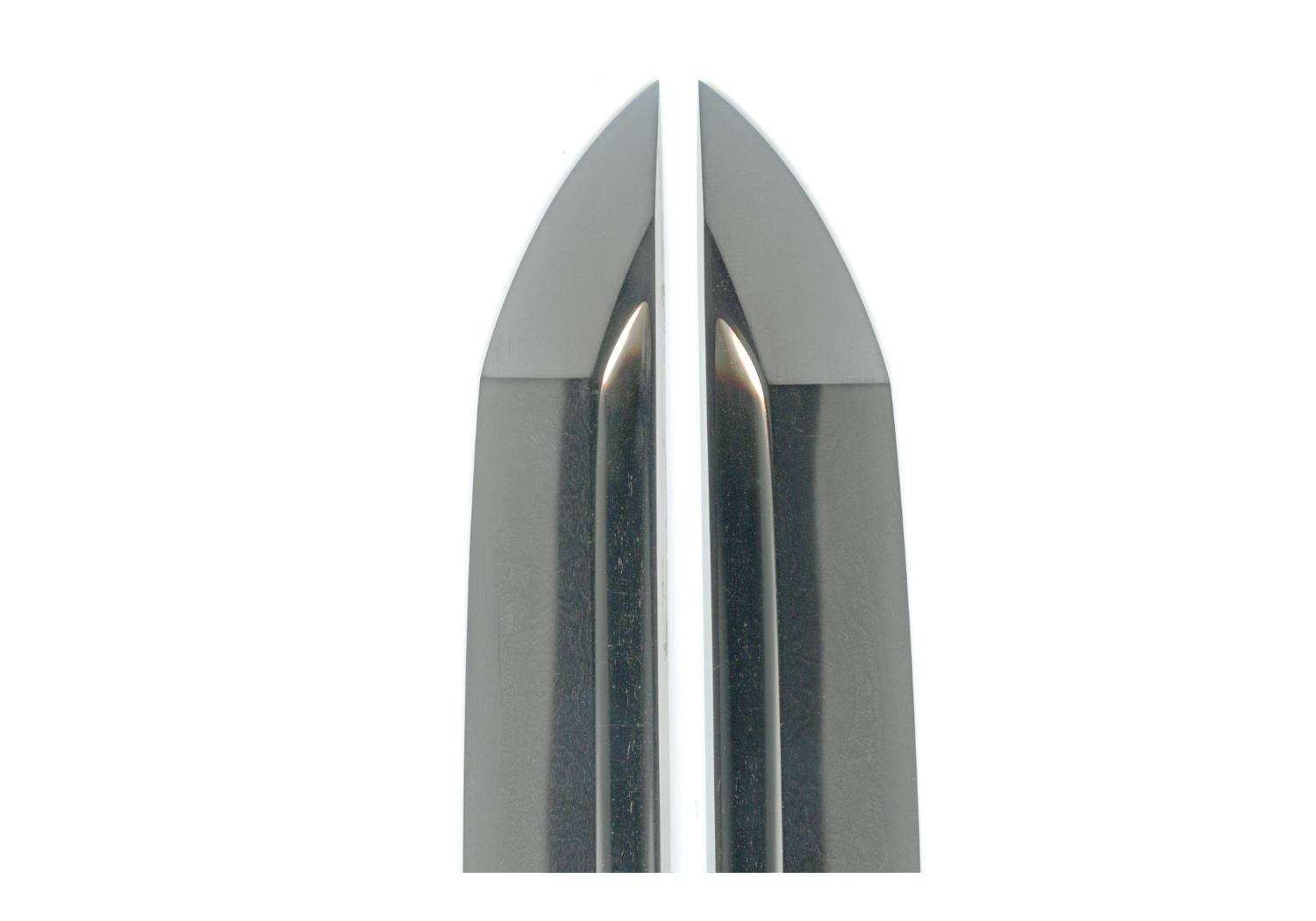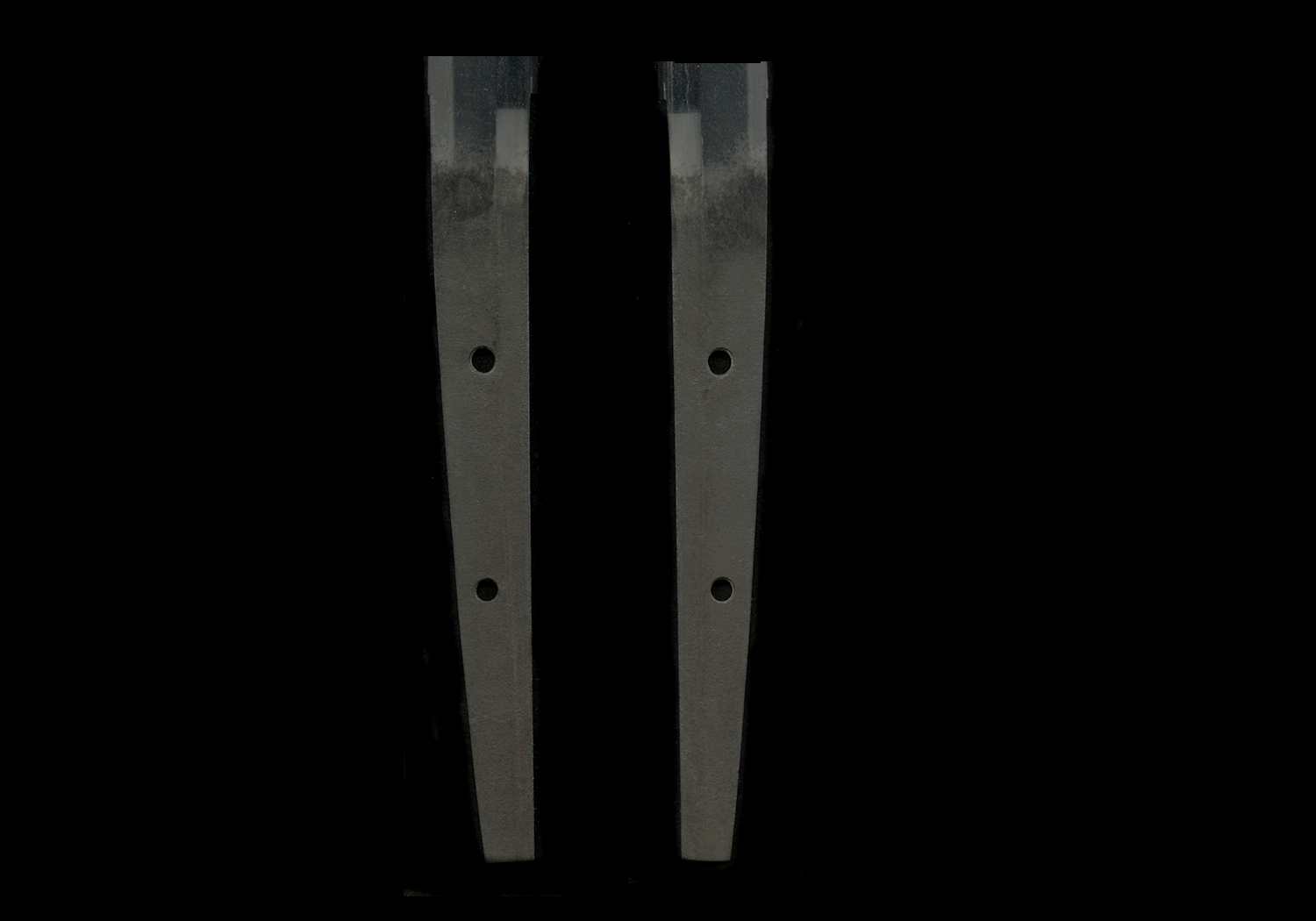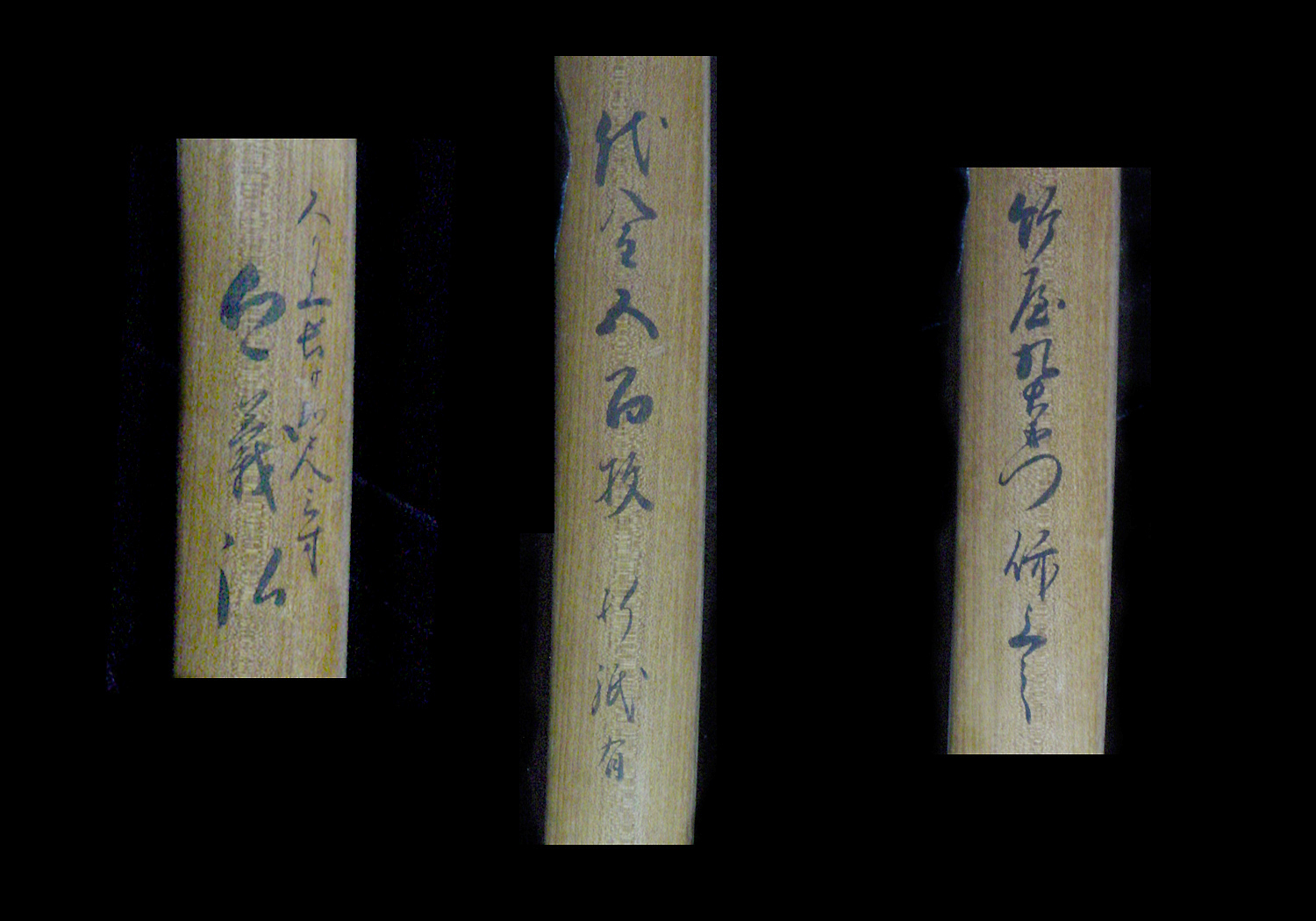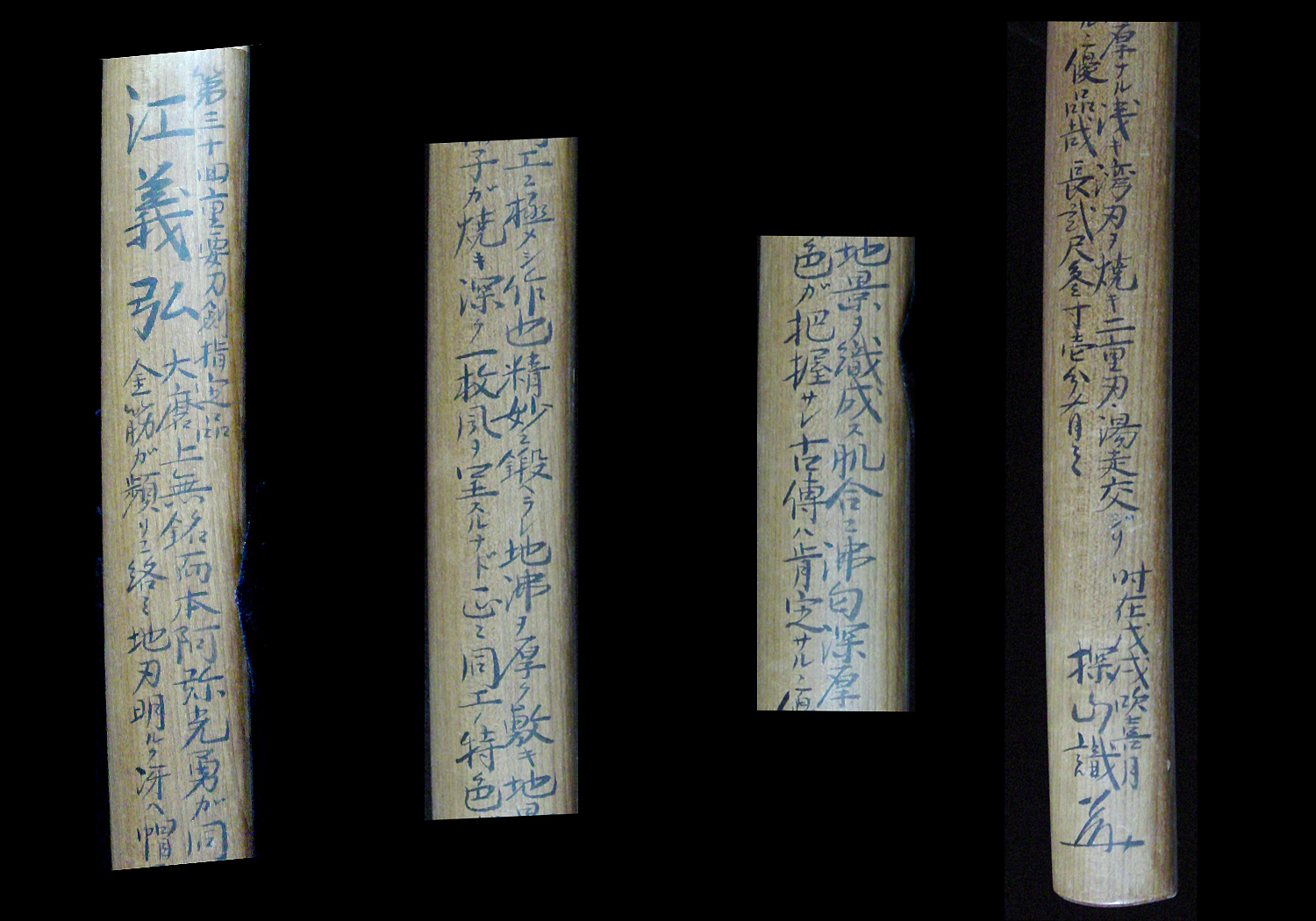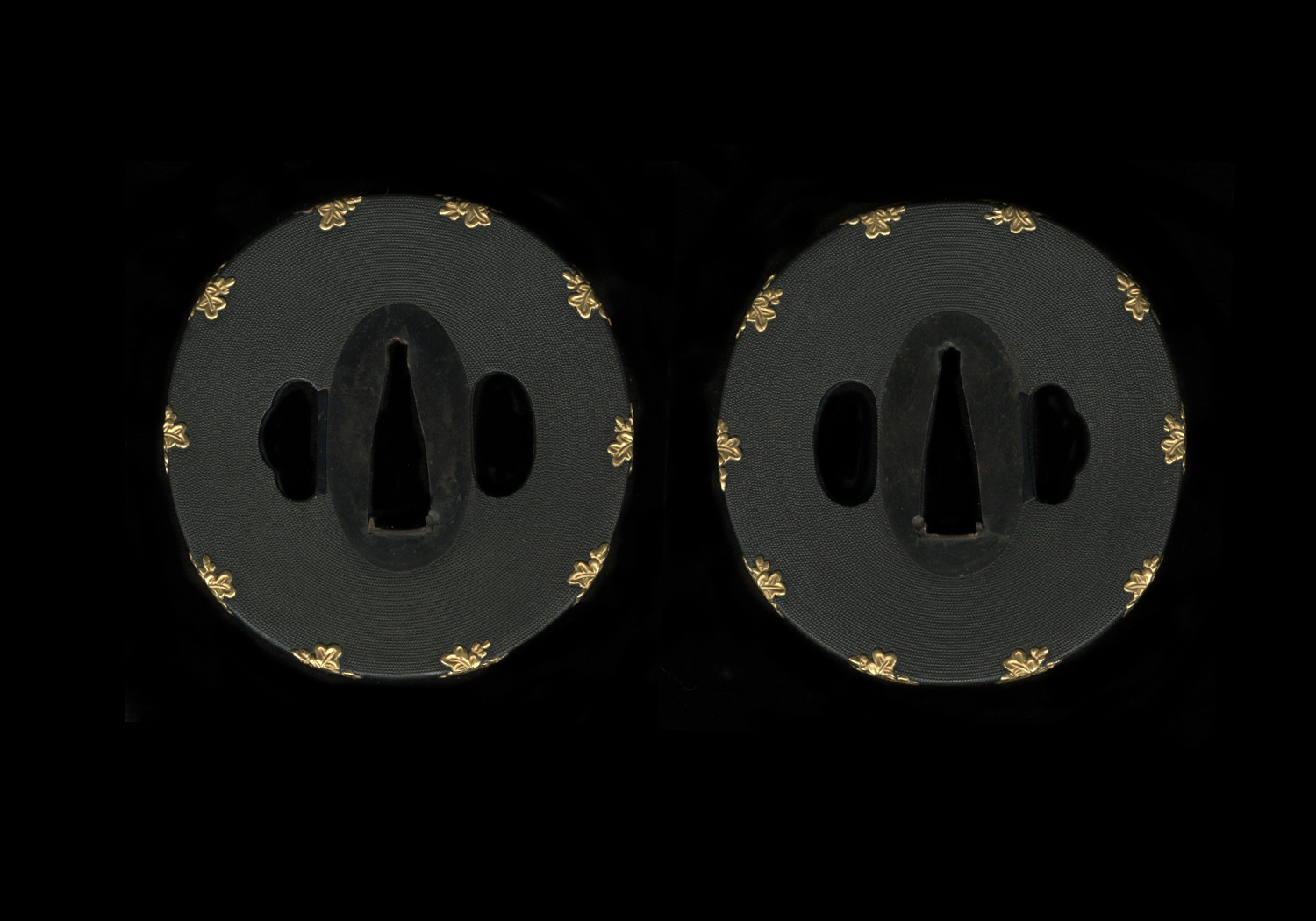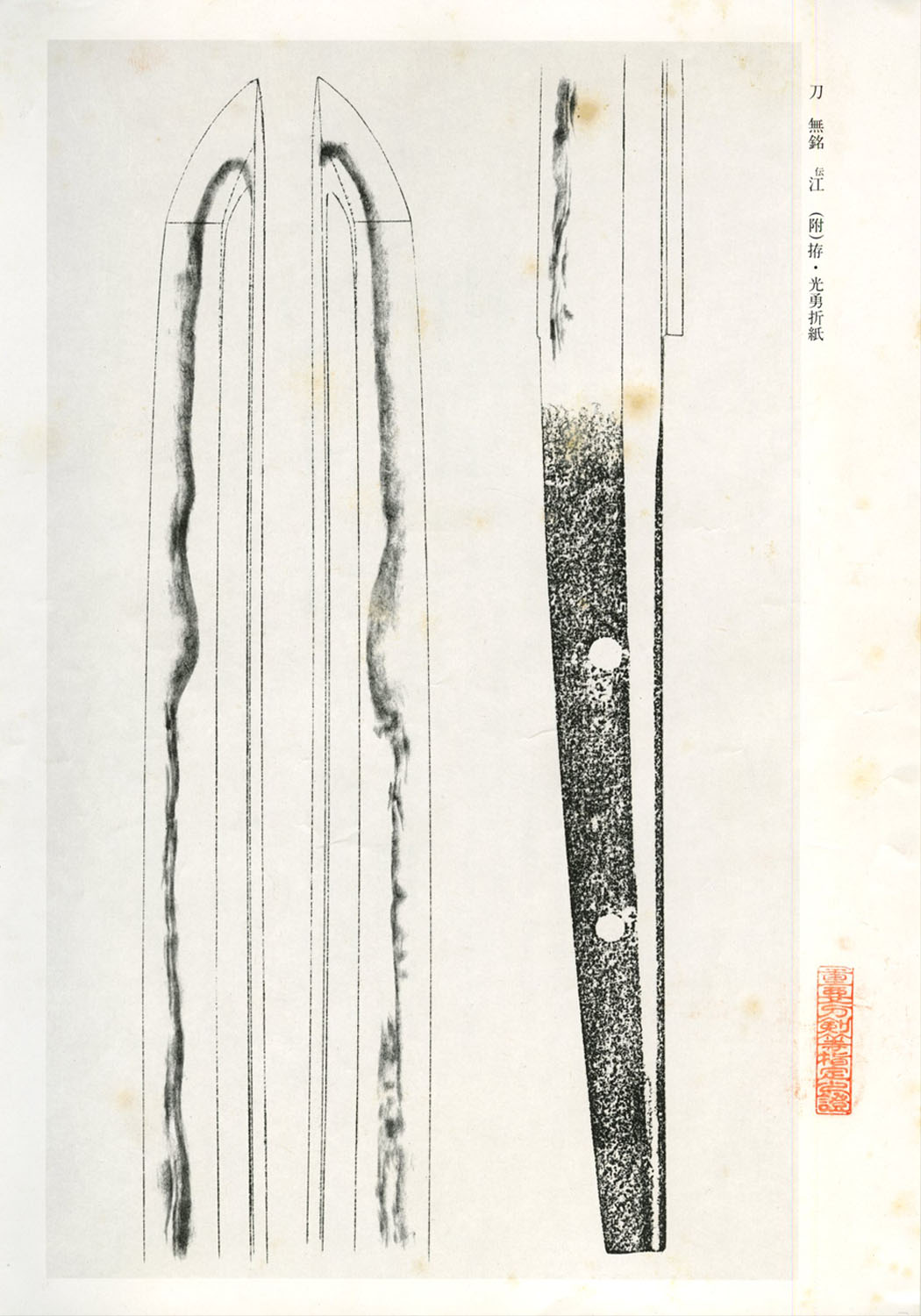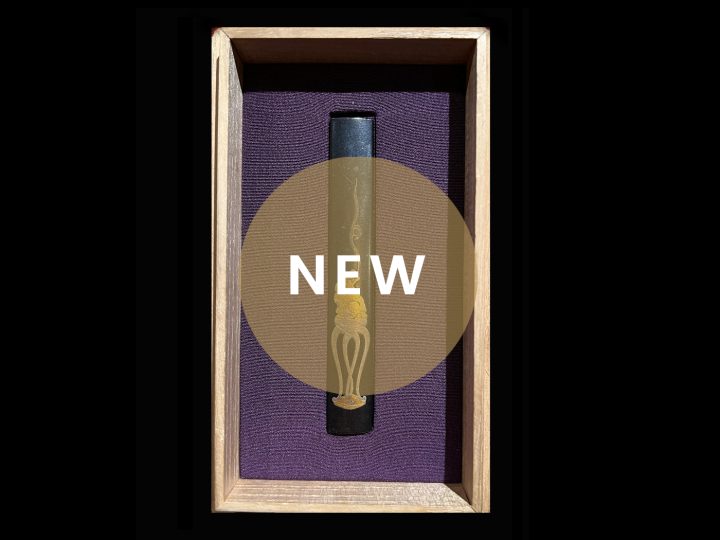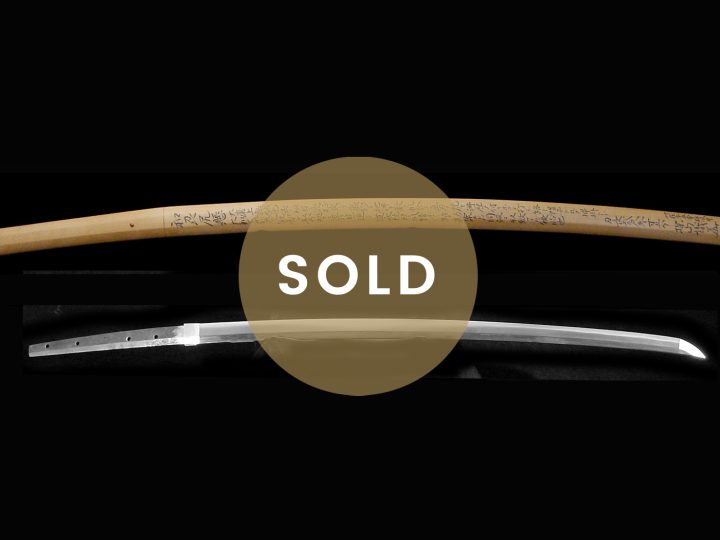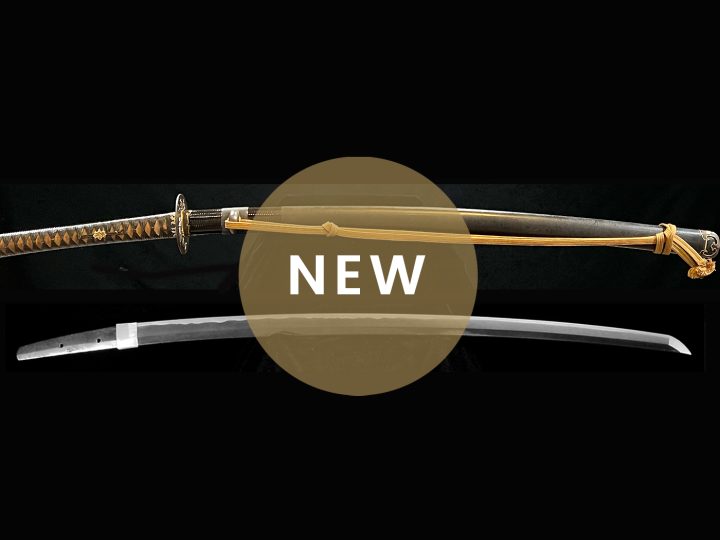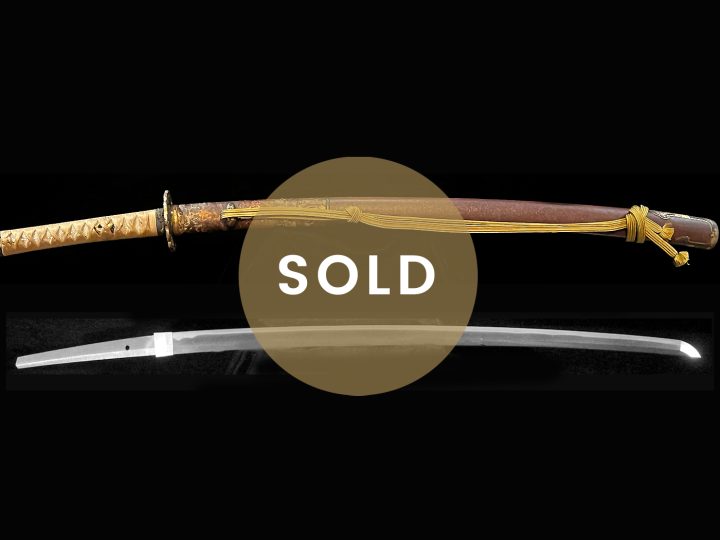
Yoshihiro (義弘) is one of the most famous sword smiths of all time. Yoshihiro’s (義弘) given name was Matsukura Go Umanosuke (松倉江右馬允) and he lived a short but auspicious life. He was a Samurai of the Momonoi family and served the Matsukura (松倉) in Etchu (越中). Since olden times he has simply been known as Go (江), the nickname taken from his place of residence. Yoshihiro (義弘) was active around the Genô Era (元應) and that would place him toward the end of the Kamakura Era (鎌倉) and the beginning of the Nanbokucho Era (南北朝).
Since the time of Toyotomi Hideyoshi (豊臣秀吉), Yoshihiro (義弘) is considered to have been one of the Nihon Sansaku (three great smiths of Japan), the other two being Masamune (正宗) and Awataguchi Yoshimitsu (粟田口吉光). He is also recorded in the old sword reference books such as Ojakusho and Kokon Mei-zukushi as having been a direct student of Masamune (正宗) and, indeed, is recorded as being one of the famous Masamune Juttetsu or ten famous disciples of Masamune (正宗). In fact, he is generally considered to have been the best of all of Masamune’s (正宗) ten disciples. Go Yoshihiro (江義弘), died at the young age of 30 in 1330. Even though his life was brief, he left some splendid examples of his work.
There have been several theories about where in the major schools of sword making he should be placed. While his early works show definite Yamato (大和) characteristics, I think most scholars agree that he should be placed firmly in the Soshu (相州) tradition based upon his interaction with Masamune (正宗). Since he comes from Etchu (越中) and is a contemporary of the famous smith, Etchu Norishige (越中の則重), some feel that there may have been a teacher-pupil relationship between these two smiths. However, since Norishige (則重) is also generally considered to have been one of the ten great students of Masamune (正宗), I think it much more likely that they were fellow students rather than teacher-student. I think the similarities in the works of Yoshihiro (義弘) and Norishige (則重) can be attributed to the fact that both studied under Masamune (正宗).
Because of the short life span of Go Yoshihiro (江義弘), his authenticated blades are very scarce. There are no signed examples. In fact, his blades are so rare that there is a saying in Japan, “You never see a ghost or a Go”. In his publication, Nihonto Newsletter, Albert Yamanaka explains this phrase as follows:
“There is a saying in Japan…..’one never sees a ghost or a Go’. This means that though we often read about and hear about ghosts, we never see one and the same can be said for Yoshihiro’s blades as well. It is that rare. In ancient Japan, when all famous blades were in great Daimyo collections, the populace never did get to see these blades, but heard much about them and the above saying came into being.”
As with the smith, Shizu Kaneuji (志津兼氏), swords exist from Yoshihiro (義弘) that are dated to a time before his study under Masamune (正宗). Early blades such as these show a strong Yamato (大和) influence. Blades made after his studies with Masamune (正宗) began show strong Soshu (相州) characteristics, as one would expect. Yoshihiro (義弘) is considered to have been not only the best of Masamune’s famous students, but the workmanship in his blades is considered to be vary faithful to the style of Masamune (正宗), perhaps more so that any of Masamune’s other students. For further information about the smith, Gô Yoshihiro, please go to the following link: Gô Yoshihiro.
This sword is a superb example of a Jûyô Tôken by Go Yoshihiro. It was designated to be an important sword (Jûyô Tôken) by the NBTHK in 1983. The Jûyô zufu is translated as follows:
Designated Jûyô Tôken at the 30h Shinsa of 23 November, the 58th year of Shôwa (1983)
Katana, Unsigned, Den Gô (江). (accompanied by) Has a koshirae with differing lacquer (kawari-nuri) koshikizami (ribbed) saya and Honami Kôyû [本阿弥光勇] (died during the 10th year of Hôreki, 1760) origami.
Measurements: Length: 70.0 cent.; Curvature: 1.1; Width at Base: 2.9 cent.; Kissaki Length: 3.35 cent.; Nakago Length: 20.75 cent.; Nakago Curvature: 0.1 cent.
Characteristics: The construction is shinogi-zukuri with an iori-mune. The curvature is rather deep, and there is a chû-kissaki. The kitae is itame-hada that is well covered in ji-nie and contains chikei. The hamon is shallow notare with a mixing in of nijû-ba. Near the monouchi, the tempering is wide. The entire habuchi is well covered in nie, and there are streaks of sunagashi with kinsuji activity. The bôshi is deeply tempered and sugu with a ko-maru. There are bôhi carvings on both sides of the blade that run off the end of the nakago. The nakago is ô-suriage, and the end is kiri. The yasuri-me are kiri, there are two mekugi-ana, and the blade is unsigned.
Explanation: Yoshihiro (義弘) is counted among the ten students of Masamune (正宗), and similar to Sadamune (貞宗), there are no extant works that are signed, making all of this swords attributed unsigned products. From long ago, the characteristics in his style of workmanship are said to be such features as a ji-ha that is extremely bright and vivid, and a bôshi that is deeply tempered.
This sword has a hamon of shallow notare, showing such variations as nijû-ba. The ji-ha is very well covered in nie, and there are streaks of sunagashi with a great deal of kinsuji activity, which shows that this is the work of a top class Sôshû smith. Moreover, such features as the deeply tempered bôshi clearly display Gô’s style of workmanship. There is an origami accompanying this blade by Honami Kôyû that is dated the sixth year of Hôreki (1757) with a value of 500 pieces of gold. The ji-ha are both healthy, and the workmanship is superb.
You will note from the photos below that the tsuka of the shirasaya is noticeably newer looking than the saya. That is because it is newer. The saya is an old one from the Edo era that is historically important. When Tanobe sensei did his sayagaki, he did not want to lose the old sayagaki from the Edo period so he wrote his sayagaki on the reverse of the old saya. Thus, we have an old shirasaya with two sayagaki.
The Edo era sayagaki is translated as follows:
Left: Gō Yoshihiro 江義弘 Suriage nagasa 2 shaku 3 sun…….. Shortened, length ~ 69.7 cm スリ上長サ貮尺三寸
Center: Daikin gohyakumai origami ari…….Has an origami that evaluates it with 500 gold pieces 代金五百枚 折紙有
Right: Takeya Kyū’emon kore o togiagaru…..Polished by Takeya Kyū’emon
竹屋九右衞門研上
The sayagaki by Tanobe sensei translates as follows:
Gô Yoshihiro
A piece from the 34th jûyô tôken.
Ô-suriage mumei, with an attribution to this same smith by Honami Kôyû. The kitae is exquisite and thickly covered in ji-nie with abundant chikei activity. The area bordering the hada is very thickly covered in nie and nioi. The hamon is tempered in shallow notare with a mixing in of nijû-ba and yubashiri. There is repeated kinsuji activity. The ji-ha is bright and vivid. The bôshi is deeply tempered in ichimai style. As there are such features as these, they clearly show the characteristics of this same smith, which affirms the traditions surrounding this smith, and makes this a splendid sword.
The length is two shaku, three sun and one bu.
Tanzan wrote (kaô)
Tsuchinoe Inu (2018), Fufuki-tsuki (May)
You will note that in both sayagaki and the NBTHK zufu write-up there is mention of an old origami by Honami Kôyû. Unfortunately that has been lost by one of the sword’s former owners. Both Tanobe and the NBTHK probably obtained the fact that it once had this origami from the mention of it on the Edo period sayagaki. A shame, indeed.
This wonderful sword comes with a first class set of koshirae. The fuchi is signed by its maker, Kirei. Kirei was known to be in the exclusive employ of the Kishû Tokugawa family. When we examine the family mon on the tsuka we find that together with the Tokugawa family mon, there is the secondary mon of a circle of five daikon. This mon can be found in the Taisei Bukan as belonging to a high ranking Samurai of the Kishû Tokugawa Kei. This would confirm that this sword belonged to a Kishû Tokugawa Samurai.
The overall quality of the koshirae is, indeed, beautiful. The gold Tokugawa and “Daikon” mon are wonderfully executed. The menuki are dark shakudo Aoi mon on a background of gold nanako. The lacquer work on the saya is top class and in wonderful condition. Everything is very quiet and refined.
NOT FOR SALE



